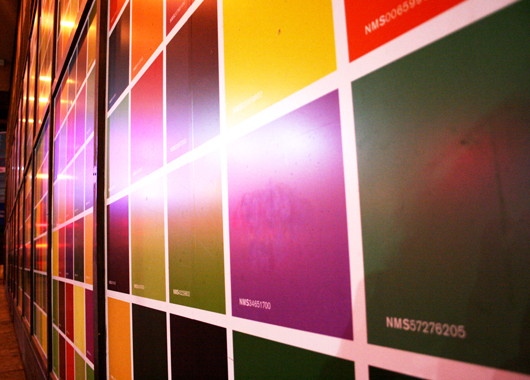“Families wanting a lasting celebration of their loved ones’ memories can now consult with an international artist who will lovingly mix a portion of their family member’s ashes into the colors of a custom painted modern art piece picture.”

Egypt’s 70 million mummies were powered by early trains and composed of a popular nineteenth-century paint known as mummy brown. The last batch was concocted in 1964 by a British paint supplier. (Photo by Justin Nobel)
The “modern art piece pictures” are known as Art in Ashes and can be ordered from memorial.com. The site also sells slightly offbeat funerary items such as pet urns and memorial garden rocks.
The ash painter is a German-born woman named Mona who presently resides in Texas, by the sea. Mona has “years of formal training in abstract techniques at art schools across Europe (Munich, Karlsruhe, and even Rome) and has traveled the globe (Asia, Canada, the U.S., and most regions of Europe).”
Mona’s style may seem grisly but painting with human remains has precedent. England’s Pre-Raphaelites used a color called mummy brown, a pigment between burnt and raw umber, derived from the ground-up remains of Egyptian mummies.
Initially, Egyptians only mummified royalty, like child pharaoh Tutankhamen, but by 1000 BC ordinary Egyptians were being preserved too. A blog entry posted by a hobbyist Egyptophile estimates that the Egyptians generated 70 million human mummies. Cloth to wrap mummies was in high demand and transported from across the Roman Empire. Mummy wrap from Tuscany used to bind a Theban tailor’s wife named Nesi-hensu was, millennia later, revealed to hold a rare written example of the Etruscan language on its underside.
Mummies eventually became a valuable resource, used as a substitute for coal in powering Egyptian trains, an idea incorporated by sci-fi writer Ray Bradbury in his poem, “The Nefertiti-Tut Express” and mocked by Mark Twain in his early novel, “The Innocents Abroad”.
English painters in the 16th and 17th centuries popularized the use of mummy brown in watercolors and oil paintings. The embalming resins gave the paint a thick, tarry texture. As painters became aware of its consistency, they abandoned it. Upon discovering the true nature of mummy brown, Edward Burne-Jones, a renowned 19th-century British stained glass artist, fled his studio in horror and tramped outside to bury his tube of paint.
One London paint merchant claimed he could satisfy the needs of his customers for 20 years with one mummy, although it is unclear whether this longevity of supply alludes to the amplitude of paint capable of being drawn from a single mummy or his insignificant clientele.
What is known, thanks to an October 1964 article in Time magazine, is that the last batch of authentic mummy brown was concocted by the British paint maker C. Roberson & Co., as the company exhausted their mummy supply. “We might have a few odd limbs lying around somewhere,” said Geoffrey Roberson-Park, managing director of C. Roberson, “but not enough to make any more paint.”
A less corporal replacement is now available. Natural Pigments sells a paint called mummy brown, $14.50 for a 100 gram jar. Their product contains 35 percent hematite as well as kaolin, quartz and goethite, the primary ingredient in brown ochre. The greater the hematite to goethite ratio the redder the mummy color. A dark-violet version with significantly more hematite is called mummy violet.
“Egyptian mummies were at one time literally available by the truckload,” reads Natural Pigments website, but no longer. Now the company composes the pigment from iron-rich mineral deposits extracted from a remote stretch of arid Russian wilderness near the Mongolian border.
“Our mummy is composed of iron oxide, calcium carbonate, kaolin, and silica, which are considered to be quite permanent and stable in mixtures with all other pigments,” boasts their website. “It is very good in oils, and excellent in all aqueous mediums, such as egg tempera, casein, and gum arabic. It performs well in wax and fresco techniques.”









